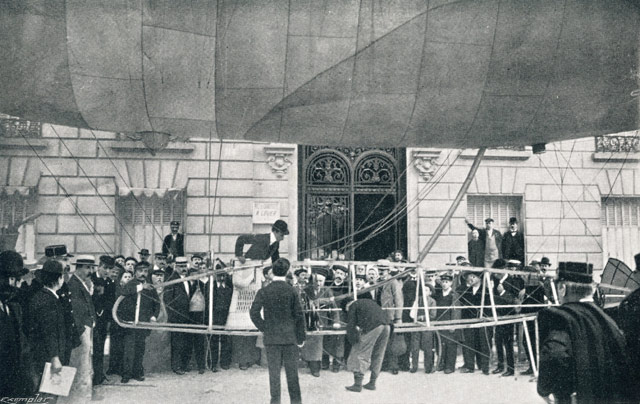The Aviator’s Heart

In Brazil’s National Air and Space Museum, there is a golden globe containing the preserved heart of Alberto Santos-Dumont, a man who thought he beat the Wright Brothers in building and flying the first heavier-than-air flying machine. Santos-Dumont’s first success was with dirigibles; at the turn of the century, he would regularly use his personal airship to fly to dinner or to visit friends.
Imagine the frenetic pace of life in belle époque Paris. Automobiles appearing on the streets, attracting huge crowds. The telegraph bringing news from all over the world. Cafés playing phonographs while their patrons drank absinthe and cocaine wine. Now imagine a Parisian walking the streets in the early morning, in a time where an automobile was still a fascinating novelty, and then suddenly, a small airship appears floating just above the street. A crowd would gather to see the aviator driving his Baladeuse (The Wanderer), a personal sized dirigible, over the streets as if it were a carriage or automobile. Santos-Dumont would then land in front of his favorite café, tie the guide rope much like one might tie a horse to a hitching post, and walk in for a meal. It must have been quite a sight. Going to the café was not the only time Santos-Dumont used his Baladeuse — he was also fond of surprising his friends by landing in front of their porches with his airship.
Paul Hoffman wrote a well-reviewed book about Santos-Dumont called Wings of Madness.





Stay Connected